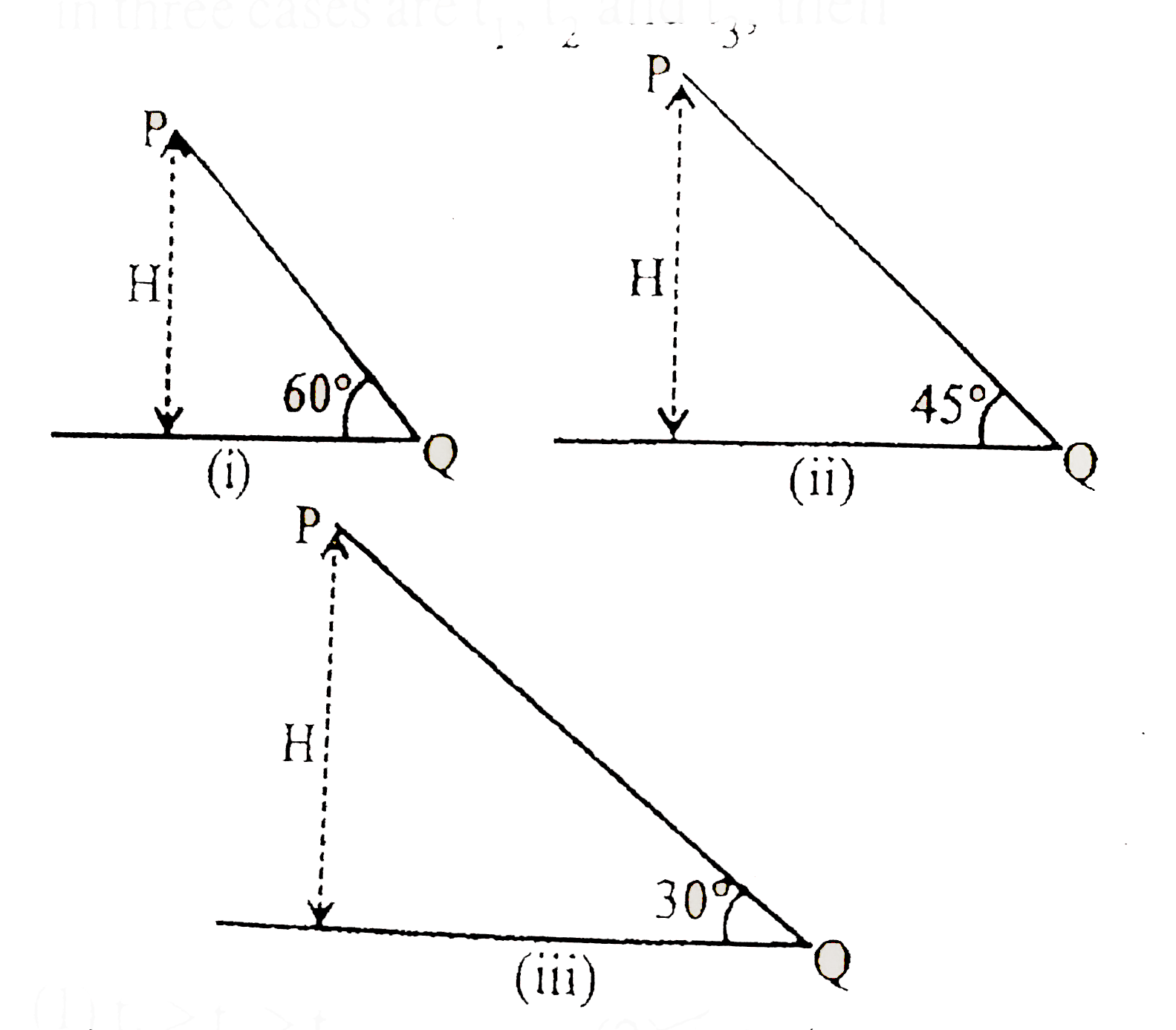In a vacuum, a five-rupee coin, a feather of a sparrow bird and a mango are dropped simultaneously from the same height. The time taken by them to reach the bottom it t1,t2andt3 respectively. In this situation, we will observe that
t1>t2>t3
t1>t3>t3
t3>t1>t2
t1=t2=t3
The correct Answer is:D
To solve the problem, we need to analyze the situation where a five-rupee coin, a feather, and a mango are dropped simultaneously in a vacuum.
1. Understanding the Concept of Vacuum:
- In a vacuum, there is no air resistance. This means that all objects, regardless of their mass or shape, will fall at the same rate due to gravity.
2. Identifying the Forces Acting on the Objects:
- In a vacuum, the only force acting on the objects is gravity. There are no opposing forces like air resistance that would affect their motion.
3. Applying the Principle of Free Fall:
- According to the principle of free fall, all objects in a vacuum will accelerate towards the ground at the same rate (approximately 9.81 m/s² on Earth), regardless of their mass.
4. Time Taken to Reach the Ground:
- Since all three objects (the five-rupee coin, feather, and mango) are subject to the same gravitational acceleration and there is no air resistance, they will all take the same amount of time to reach the ground.
5. Conclusion:
- Therefore, the time taken by the five-rupee coin (t₁), the feather (t₂), and the mango (t₃) will be equal. We can express this mathematically as:
t1=t2=t3
Final Answer:
In this situation, we will observe that t1=t2=t3.
---
- In a vacuum, there is no air resistance. This means that all objects, regardless of their mass or shape, will fall at the same rate due to gravity.
- In a vacuum, the only force acting on the objects is gravity. There are no opposing forces like air resistance that would affect their motion.
- According to the principle of free fall, all objects in a vacuum will accelerate towards the ground at the same rate (approximately 9.81 m/s² on Earth), regardless of their mass.
- Since all three objects (the five-rupee coin, feather, and mango) are subject to the same gravitational acceleration and there is no air resistance, they will all take the same amount of time to reach the ground.
- Therefore, the time taken by the five-rupee coin (t₁), the feather (t₂), and the mango (t₃) will be equal. We can express this mathematically as:
t1=t2=t3
In this situation, we will observe that t1=t2=t3.
Topper's Solved these Questions
Similar Questions
Knowledge Check
Two objects are dropped together from the height h1 and h2 . The ratio of time taken by them to reach the earth is
A√h1h2Bh1h2C√h2h1Dh2h1A ball of mass m1 and another ball of mass m2 are dropped from equal height. If the time taken by the balls are t1 and t2, respectively, then
At1=t2Bt1=2t2Ct1t2=m1m2Dt1t2=m2m1Two balls are dropped from heights h and 2h respectively. The ratio of time taken by these balls to reach the earth is
A1:√2B√2:1C2:1D1:4
A body is dropped from a large height h in time t0 second. Find the time taken to cover the last meter of fall in terms of t0
View SolutionAn iron ball and a wooden ball of the same radius are released from a height ‘ h ’ in vacuum. The time taken by both of them to reach the ground is
View SolutionAn iron ball and a wooden ball of the same radius are released from a height ‘ h ’ in vacuum. The time taken by both of them to reach the ground is
View SolutionAn object is dropped from a height h. Then the distance travelled in times t,2t,3t are in the ratio.
View SolutionA particle starts from rest from point P and follow a path PQ on the three smooth surfaces as shown in figures. If time taken by the particle in three cases are t1,t2 and t3 then

View Solution
